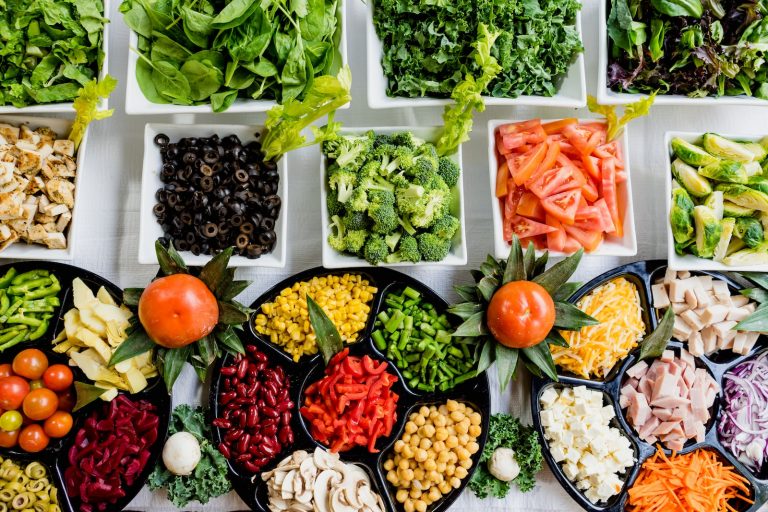As a parent, I know how difficult it can be to get your kids to eat vegetables. It’s a constant battle to make sure they’re getting the nutrients they need to grow up healthy and strong.
But it’s not just about their physical health, it’s also about their mental and emotional well-being. Studies have shown that a diet rich in fruits and vegetables can improve mood and reduce the risk of depression in children.
That’s why I’ve put together a list of 7 tips to help you get your kids to eat vegetables. These tips are based on research and personal experience, and they’re designed to make the process as easy and enjoyable as possible.
Whether you’re dealing with a picky eater or just looking for new ways to incorporate veggies into your child’s diet, these tips will help you succeed.
Why Eating Vegetables is Important
As a parent, I know how difficult it can be to get kids to eat their vegetables. However, it’s important to keep trying because vegetables are an essential part of a healthy diet.
They provide a wide range of nutrients that are necessary for growth and development, including vitamins, minerals, and fiber.
According to the USDA, people who eat more vegetables and fruits as part of an overall healthy diet are likely to have a reduced risk of some chronic diseases, such as heart disease, including heart attack and stroke, and certain types of cancers. Vegetables are also low in calories, making them a great choice for maintaining a healthy weight.
When it comes to kids, it’s important to start early and make vegetables a regular part of their diet. Research has shown that children who eat a variety of vegetables are more likely to continue eating them as they get older.
It may take some patience and creativity, but there are many ways to make vegetables appealing to kids.
One way to encourage kids to eat vegetables is to involve them in the process. Take them grocery shopping and let them pick out a few vegetables they want to try. Let them help wash and prepare the vegetables, and even help cook them.
This can make them feel more invested in the process and more likely to try the vegetables.
Overall, eating vegetables is important for maintaining a healthy diet and reducing the risk of chronic diseases.
As a parent, it’s important to make vegetables a regular part of your child’s diet and find creative ways to make them appealing.
With patience and persistence, you can help your kids develop a love for vegetables that will last a lifetime.

Start Early and Be Consistent
As a parent, I know how challenging it can be to get kids to eat their vegetables. However, one of the most effective ways to get kids to love vegetables is to start early and be consistent.
According to Verywell Family, introducing vegetables to your child’s diet as early as possible can help them develop a taste for healthy foods. This means that you should start feeding your baby vegetables when they are ready for solid foods.
It’s important to be consistent when introducing vegetables to your child’s diet. Don’t give up if your child refuses to eat a particular vegetable the first time. Keep offering it to them regularly, and they may eventually develop a taste for it.
One way to make vegetables a regular part of your child’s diet is to include them in snacks.
Cut up some carrots, cucumbers, or bell peppers and serve them with hummus or yogurt dip.
This can be a great way to get your child to eat more vegetables throughout the day.
Make Vegetables Fun
I know that getting kids to eat their vegetables can be a real challenge. But one of the best ways to get them excited about eating vegetables is to make it fun!
One way to do this is by getting creative with the presentation of the veggies. You can try using cookie cutters or even a paring knife to cut vegetable snacks for kids into fun shapes like hearts, stars, or zig zags.
This can make vegetables look more appealing to kids and help them to be more excited about trying them.
Another way to make vegetables fun is by incorporating dips and dressings. Kids love to dip their food, so offering a variety of dips like hummus or salad dressing can make vegetables more interesting and enjoyable for them.
Plus, dips can add some extra flavor to the veggies, which can make them more appealing to picky eaters.
Finally, you can also try to involve your kids in the preparation of the vegetables. Let them help you wash and chop the veggies, and give them the option to choose which vegetables they want to eat.
When kids feel like they have some control over what they are eating, they are more likely to be excited about trying new foods.
Get Your Kids Involved
Tip 3 is to get your kids involved in the process of choosing and preparing vegetables. When kids feel like they have a say in what they eat, they are more likely to try new things.
Take your kids to the grocery store or farmer’s market and let them choose some vegetables that they want to try. You can also involve them in the cooking process by having them wash, chop, or mix the vegetables.
Another way to get your kids involved is to start a vegetable garden. This will give them a sense of ownership and responsibility for their food.
They will be excited to see their vegetables grow and will be more likely to try them when they are ready to harvest.
Even if you don’t have a lot of space, you can grow vegetables in containers on a balcony or patio.
When you involve your kids in the process, it can also be a fun bonding experience. You can make it a family activity to plan and prepare meals together.
This will not only encourage your kids to eat more vegetables but also teach them valuable life skills.

Offer a Variety of Vegetables
When it comes to getting kids to eat vegetables, variety is key. As a parent, I know how easy it is to get stuck in a rut and serve the same vegetables over and over again.
But offering a variety of vegetables can make a big difference in getting your kids to eat them.
One way to introduce new vegetables is to take your kids to the farmers’ market. Farmers’ markets offer a wide range of interesting vegetables that your kids may not have seen before.
It’s a great learning experience that connects kids with real food and gives them a chance to meet the people who grow it.
Another way to offer variety is to try different cooking methods. For example, roasting vegetables brings out their natural sweetness and can make them more appealing to kids. You can also try grilling, sautéing, or steaming vegetables to see which method your kids prefer.
Finally, don’t be afraid to get creative with your vegetable dishes. Try adding vegetables to soups, stews, casseroles, and other dishes your kids already enjoy.
You can also try making vegetable-based dips or spreads, like hummus or guacamole, to serve with raw vegetables.
Sneak Vegetables into Their Favorite Foods
As a parent, I know how challenging it can be to get kids to eat their vegetables. But one way that has worked for me is to sneak them into their favorite foods. Here are a few ways to do it:
1. Add veggies to pasta sauce: When making spaghetti or other pasta dishes, add finely chopped veggies like carrots, zucchini, and bell peppers to the sauce. Your kids won’t even notice they’re there!
2. Mix veggies into meatballs: Puree veggies like onions, carrots, and spinach and mix them into the meatball mixture. Not only will this add some extra nutrition, but it will also make the meatballs more moist and flavorful.
3. Make veggie muffins: Use grated zucchini or carrots to make muffins or quick bread. You can also add pureed veggies like sweet potato or pumpkin to the batter.
4. Sneak veggies into smoothies: Add a handful of spinach or kale to your child’s favorite smoothie recipe. The sweetness of the fruit will mask the taste of the veggies.
5. Use veggies as a pizza topping: Instead of just using pepperoni or sausage, add some veggies like mushrooms, onions, and bell peppers to your pizza toppings. Your kids might just discover a new favorite!
6. Make veggie chips: Slice veggies like sweet potatoes, beets, and kale into thin slices and bake them in the oven for a healthy and crunchy snack.
7. Add veggies to mac and cheese: Mix in some pureed butternut squash or sweet potato to your mac and cheese recipe. Your kids won’t even notice the difference, but they’ll be getting some extra nutrients. By sneaking veggies into your child’s favorite foods, you can help ensure that they’re getting the nutrition they need without having to fight them at every meal. Give these tips a try and see how they work for your family!
Be a Good Role Model
One of the most effective ways to get your kids to eat vegetables is to be a good role model. Children are more likely to eat vegetables if they see their parents eating them regularly.
So, if you want your kids to eat more vegetables, start by eating more vegetables yourself.
When you sit down to eat, make sure that you have a variety of vegetables on your plate.
Try to include at least one vegetable with every meal. You can also make vegetables a snack option for yourself and your kids.
Cut up some carrot sticks, cucumber slices, or bell pepper strips and serve them with hummus or another healthy dip.
Another way to be a good role model is to involve your kids in meal planning and preparation.
Let them help you choose the vegetables you will be eating and teach them how to prepare them.
When children are involved in the cooking process, they are more likely to try new foods and enjoy eating them.
Finally, make sure that you are practicing healthy eating habits in general. Avoid eating junk food and sugary drinks in front of your kids. Instead, choose healthy snacks and drinks that will set a good example for your children.
Don’t Give Up
As a parent, it can be frustrating when your child refuses to eat their vegetables. But it’s important to remember that it can take time for kids to develop a taste for certain foods.
Don’t give up after just one or two attempts. Keep offering vegetables in different ways and be patient.
One strategy is to introduce new vegetables alongside familiar ones. For example, if your child likes carrots, try serving them with a new vegetable like broccoli or cauliflower.
You can also try presenting vegetables in different forms, such as raw, roasted, or steamed. Experimenting with different cooking methods can help bring out different flavors and textures in vegetables.
Another approach is to involve your child in the process of choosing and preparing vegetables. Take them to the grocery store or farmer’s market and let them pick out a new vegetable to try.
Then, have them help wash and chop the vegetables before cooking. This can help them feel more invested in the process and more willing to try new foods.
Remember, it’s important to model healthy eating habits yourself. If your child sees you eating and enjoying vegetables, they may be more likely to try them as well.
And don’t forget to praise your child when they do try new vegetables, even if they don’t like them at first. Encouragement can go a long way in helping your child develop a taste for healthy foods.
Conclusion
As a parent, I understand the struggle of getting kids to eat their vegetables. Through my research and personal experience, I have learned that it takes patience, creativity, and consistency to get kids to develop a taste for veggies.
One of the most important things to keep in mind is to lead by example. When kids see their parents eating and enjoying vegetables, they are more likely to follow suit.
Additionally, offering a variety of vegetables and preparing them in different ways can help make them more appealing to kids.
It’s also important to avoid pressuring or forcing kids to eat vegetables. Instead, make it a positive experience by involving them in the meal planning and preparation process.
This can help them feel more invested in the meal and more willing to try new things.
Remember, it can take time for kids to develop a taste for vegetables. Don’t get discouraged if they don’t immediately take to them. Keep offering them in a variety of ways and be patient.
With persistence and creativity, you can help your kids develop healthy eating habits that will last a lifetime.











